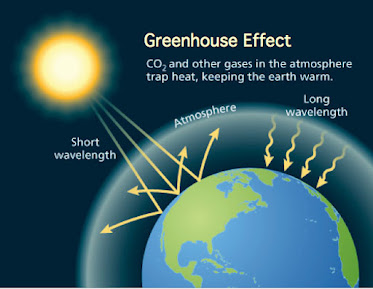
The green house effect is a natural process that occurs in the Earth’s atmosphere and is essential for maintaining a suitable temperature for life on our planet. It works by trapping some of the sun’s energy within the Earth’s atmosphere, which helps keep the planet warm enough to support life. Here’s how the greenhouse effect works:
Green house effects in global warming
Solar Radiation: The Sun emits energy in the form of sunlight, including visible light and ultraviolet (UV) radiation. This energy travels through space and reaches the Earth.
Absorption of Solar Energy: When sunlight reaches the Earth’s atmosphere, some of it is absorbed by the Earth’s surface (land, water, and vegetation). This absorbed energy heats the Earth’s surface.
Re-radiation as Infrared Radiation: The Earth’s surface, now warmed by the absorbed solar energy, emits heat energy in the form of infrared radiation (heat radiation).
Greenhouse Gases: Certain gases in the Earth’s atmosphere, known as greenhouse gases, have the property of being able to absorb and re-radiate infrared radiation. These gases include carbon dioxide (CO2), methane (CH4), water vapor (H2O), and others.
Trapping Infrared Radiation: Greenhouse gases in the atmosphere trap some of the outgoing infrared radiation. They act like a “blanket” around the Earth, preventing a portion of the heat from escaping directly into space.
Warming Effect: As a result of the greenhouse effect, the Earth’s temperature is kept at a level suitable for life. Without this natural greenhouse effect, the Earth’s average temperature would be much colder, making it inhospitable.
The problem arises when human activities, such as burning fossil fuels (coal, oil, and natural gas), deforestation, and industrial processes, release additional greenhouse gases into the atmosphere. This enhanced greenhouse effect intensifies the trapping of heat, leading to an increase in the Earth’s average surface temperature. This phenomenon is commonly referred to as “global warming.”
The consequences of excessive global warming include rising sea levels, more frequent and severe heatwaves, altered weather patterns, increased precipitation in some regions, more intense storms, and disruptions to ecosystems and biodiversity. To mitigate the harmful effects of global warming, efforts are being made to reduce greenhouse gas emissions and transition to cleaner energy sources and sustainable practices.





